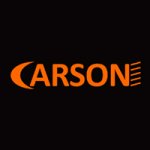
Aftermarket headlights serve as alternatives to the original headlights that come with a vehicle from the original equipment manufacturer (OEM). They are designed to be compatible replacements, offering an option for car owners to upgrade or replace their existing headlights. Unlike OEM headlights, aftermarket headlights are not manufactured by the company that built the vehicle. Instead, they are produced by third-party companies that specialize in aftermarket automotive parts. Aftermarket headlights are offered as individual parts or complete headlight systems that car owners can purchase separately from the vehicle. They are commonly available through various channels, including auto parts stores, online retailers, and specialty shops. The aftermarket industry caters to diverse preferences, allowing consumers to choose headlights that align with their desired style, performance, or budget considerations. Whether someone is looking for headlights that match a specific style, enhance performance, or fit a particular budget, the aftermarket sector provides options that allow customization and personalization according to individual preferences. The aftermarket industry offers a wide range of options, including headlights for various makes and models. This diversity allows vehicle owners to find headlights that match their preferences, whether they are looking for modern, classic, or performance-oriented designs. Car enthusiasts and everyday vehicle owners alike find aftermarket headlights appealing for their ability to enhance both the aesthetics and functionality of their vehicles.
The popularity of aftermarket headlights is driven by a combination of customization options, improved performance, advanced technologies, cost-effectiveness, ease of installation, and the availability of diverse styles. Vehicle owners often choose aftermarket headlights to customize the appearance of their vehicles. Aftermarket options provide a wide range of styles, designs, and color temperatures, allowing owners to achieve a unique and personalized look for their headlights. Aftermarket headlights offer aesthetic features such as distinctive lens patterns, color accents, or unique styling elements. These features contribute to a more visually appealing and customized appearance, allowing car owners to stand out on the road. Many aftermarket headlights are designed to provide improved lighting performance compared to stock headlights. Upgrades may include brighter illumination, better beam patterns, and the adoption of advanced lighting technologies such as LED or HID bulbs. The integration of advanced lighting technologies, such as LED or HID/Xenon bulbs, is a significant factor driving the popularity of aftermarket headlights. These technologies offer benefits such as increased brightness, energy efficiency, and longer lifespan compared to traditional halogen bulbs. Aftermarket headlights often present a cost-effective alternative to OEM replacements. Vehicle owners may find competitive pricing for aftermarket options, making it an attractive choice for those seeking upgrades without breaking the bank. Many aftermarket headlights are designed for easy installation, allowing car owners to replace their headlights without extensive modifications or professional assistance. This ease of installation appeals to individuals who prefer a DIY (do-it-yourself) approach. Aftermarket headlights may come with unique features such as projector lenses, halo lights, or specific lighting patterns. These distinctive styles cater to consumers looking for headlights that go beyond standard factory options. Aftermarket headlights are often chosen as replacements for damaged or worn-out factory headlights. The availability of diverse aftermarket options allows owners to find suitable replacements that match their specific requirements.
Various types of aftermarket headlights are available, each offering unique features and styling. Projector headlights feature a unique design with a projector lens that produces a focused and controlled beam of light. Angel eye or halo headlights feature a ring-shaped illumination around the headlight. These halos can be integrated into projector headlights and are often associated with a distinctive and stylish appearance. Euro style headlights, also known as clear or crystal headlights, have a clear lens cover and often feature a modern and sleek design. Black housing headlights have a housing with a black finish instead of the traditional chrome. This style is popular for creating a more aggressive and customized look. Black housing headlights can be found with various lighting technologies. Smoked headlights have a darker lens cover that provides a smoked or tinted appearance. While they may reduce some light output, smoked headlights are chosen for their aesthetic appeal and can be combined with different lighting technologies. Color-changing headlights use RGB LED technology to allow users to customize the color of their headlights. These headlights often come with remote controls or smartphone apps to adjust colors and lighting effects. Bi-xenon headlights use xenon HID technology and have a dual function for both low and high beams. They provide a high-intensity and focused light output suitable for various driving conditions. Retractable or pop-up headlights have a mechanism that allows them to retract or pop up when in use. While less common in modern vehicles, some enthusiasts seek aftermarket options for a retro or unique look.
LED technology has opened up completely new horizons in the design and performance of aftermarket headlights. LED aftermarket headlights consume less power than traditional lighting sources, contributing to energy savings and reducing the strain on the vehicle's electrical system. The extended lifespan of LED headlights reduces the frequency of replacements, offering cost savings and ensuring consistent performance over an extended period. LEDs are compact and allow for versatile and stylish design options in headlight assemblies. LED headlights provide designers with the freedom to create sleek, modern, and aerodynamic headlight designs, contributing to the overall aesthetics of the vehicle. LED headlights produce a bright and focused light output, significantly improving visibility on the road. LED headlights offer immediate visibility upon activation, enhancing safety by reducing the time it takes for the headlights to reach full brightness. The ability to customize color temperature adds a level of personalization to the vehicle's lighting. LED headlights can incorporate dynamic features, such as adaptive lighting, automatic level adjustment, and dynamic beam shaping. LED headlights can be integrated with smart features, such as connectivity with vehicle systems, adaptive cruise control, and connectivity with navigation systems. By providing enhanced visibility, customization options, energy efficiency, longevity, instant illumination, dynamic features, stylish design possibilities, smart functionalities, environmental benefits, and opportunities for customization and personalization, LED technology has transformed the aftermarket headlight industry and contributed to safer, more efficient, and aesthetically pleasing driving experiences.
Aftermarket LED headlights come in various forms. LED conversion kits provide a comprehensive solution for upgrading both the headlight bulbs and the associated components. These kits typically include LED bulbs, drivers, and sometimes additional accessories for easy installation. Projector LED headlights feature a projector lens that focuses and directs the light output, providing a more controlled and focused beam pattern. LED halo or angel eye headlights include a ring of LEDs around the headlight, creating a distinctive halo effect. These headlights are popular for their stylish appearance and are available in various colors, allowing for customization. Sequential LED headlights feature LEDs that light up in a sequential pattern, providing a dynamic turn signal effect. This type of headlight is known for its eye-catching appearance and modern styling. Some aftermarket LED headlights incorporate built-in daytime running lights (DRL). These DRLs provide additional visibility during the day and contribute to the overall aesthetics of the vehicle. Complete LED headlight assemblies are designed to replace the entire factory headlight unit. These assemblies often include integrated LED bulbs, housing, and lenses. They are available in various styles, such as black housing, clear lens, or projector-style assemblies. Bi-LED headlights use LED technology for both low and high beams. They offer a high-intensity and focused light output, and their design often contributes to improved visibility and safety. Custom LED retrofit headlights involve modifying existing headlight assemblies to incorporate aftermarket LED components. This may include retrofitting projectors, custom housings, and upgraded LED bulbs for a personalized and high-performance lighting setup. Sequential switchback LED headlights combine sequential turn signals with dual-color functionality. They switch between white for DRL or low beam and amber for turn signals, providing a modern and attention-grabbing feature.
Some aftermarket headlights utilize laser technology for high beam lighting, offering a cutting-edge and high-performance lighting solution. Laser headlights are a relatively recent innovation that leverages laser diodes to produce light, providing several advantages over traditional lighting technologies. Laser headlights are known for their extremely high intensity and brightness. The use of laser diodes allows for a concentrated and powerful light output. The focused and intense beam of light produced by lasers can reach farther down the road, enhancing visibility for the driver during nighttime driving. Laser headlights offer precise control over the direction and shape of the light beam. This precision allows for adaptive lighting systems that can adjust the beam pattern dynamically based on driving conditions, such as steering input, speed, and the presence of other vehicles. Laser headlights are often integrated into adaptive lighting systems that can automatically adjust the direction and range of the light beam based on environmental factors. This contributes to enhanced safety and visibility without causing glare for other road users. Some aftermarket laser headlights come equipped with advanced safety features, such as road sign recognition, lane-keeping assistance, and adaptive high-beam control. These features utilize the capabilities of laser technology to enhance overall driving safety.
The design considerations of aftermarket headlights encompass a balance between visual aesthetics, performance enhancements, regulatory compliance, and consumer preferences. Manufacturers strive to create headlights that not only enhance the vehicle's appearance but also provide improved functionality and meet safety standards. Aftermarket headlights are designed to be compatible with specific makes and models of vehicles. This includes considerations for the shape of the headlights, mounting points, and electrical connections. Manufacturers may incorporate innovative and futuristic designs to set their aftermarket headlights apart from standard factory options. This can include cutting-edge shapes, signature lighting elements, or other design innovations. Manufacturers consider regulatory standards for automotive lighting to ensure that aftermarket headlights comply with safety and legal requirements. This includes considerations for beam patterns, intensity, and color temperatures. Aftermarket headlights are often designed to be compatible with existing mounting points, connectors, and electrical systems, facilitating straightforward installation for consumers.











